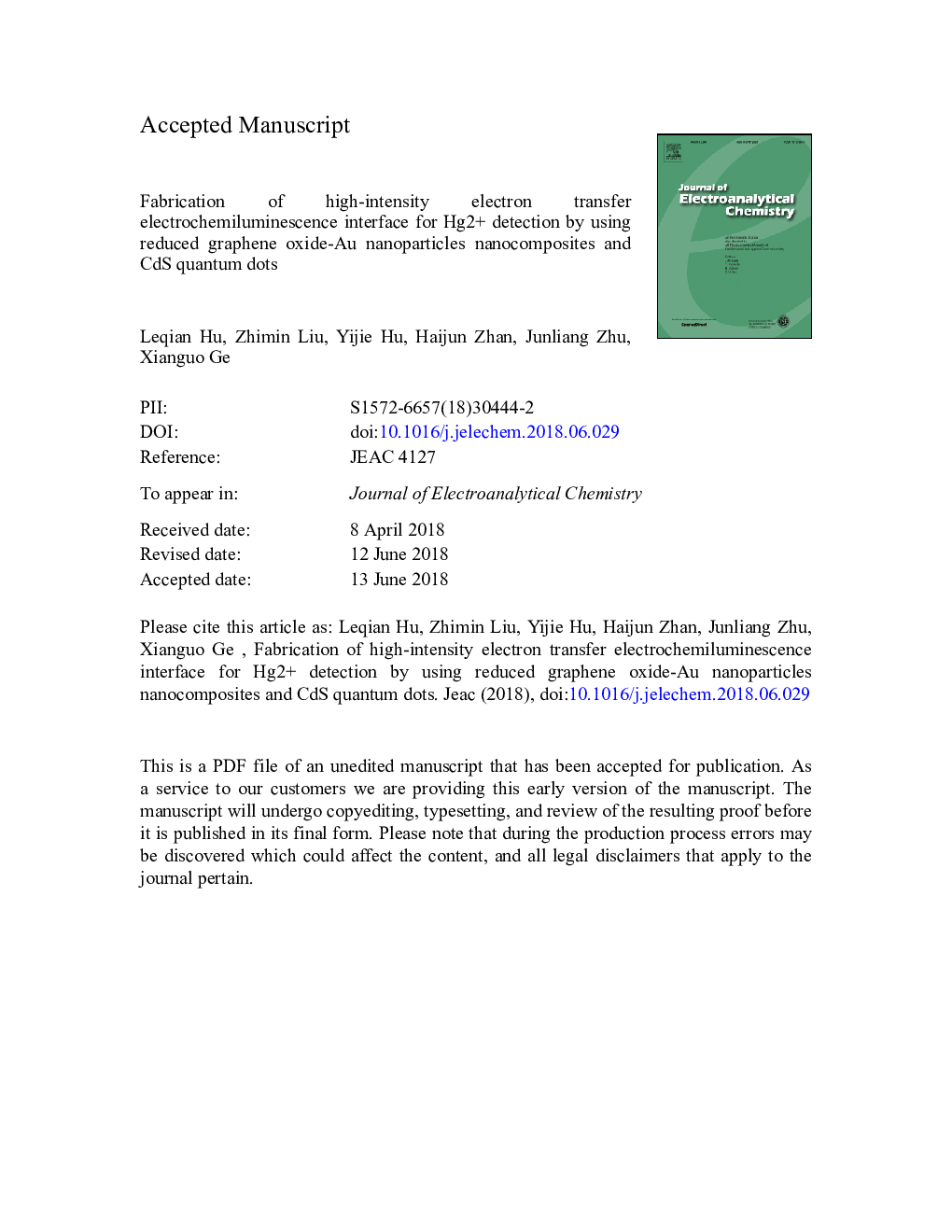| Article ID | Journal | Published Year | Pages | File Type |
|---|---|---|---|---|
| 6661610 | Journal of Electroanalytical Chemistry | 2018 | 46 Pages |
Abstract
A novel electrochemiluminescence (ECL) biosensing interface for Hg2+ analysis was constructed based on the enhanced ECL signal from CdS quantum dots by reduced graphene oxide-Au nanoparticles (RGO-AuNPs) nanocomposites. RGO-AuNPs were prepared by the heat-treatment of graphene oxide and HAuCl4 solution under alkaline environment. The prepared RGO-AuNPs composites were dispersed in N,N-dimethylformamide and dropped onto the surface of glassy carbon electrode (GCE). Double-stranded DNA modified with amino at one end was then immobilized on the RGO-AuNPs/GCE surface in the presence of 1-pyrenebutyric acid N-hydroxysuccinimide linker, following which the avidin-modified CdS quantum dots were linked to double-stranded DNA labeled with biotin at another end through the formation of biotin-avidin complex. The excellent electrical conductivity of RGO-AuNPs nanocomposites and the high charge transfer efficiencies of the double-stranded DNA with T-Hg2+-T complex, which produced high-intensity electron transfer interface and improved the sensitivity of the biosensor. After Hg2+ was added into the detection solution, the increased ECL signals showed good correlation with Hg2+ concentration. The linear range of the sensor was 5.0â¯Ãâ¯10â13-1.0â¯Ãâ¯10â9â¯M with a detection limit of 2.0â¯Ãâ¯10â13â¯M. This ECL biosensor showed satisfactory results when used for detecting Hg2+ in real lake water.
Related Topics
Physical Sciences and Engineering
Chemical Engineering
Chemical Engineering (General)
Authors
Leqian Hu, Zhimin Liu, Yijie Hu, Haijun Zhan, Junliang Zhu, Xianguo Ge,
